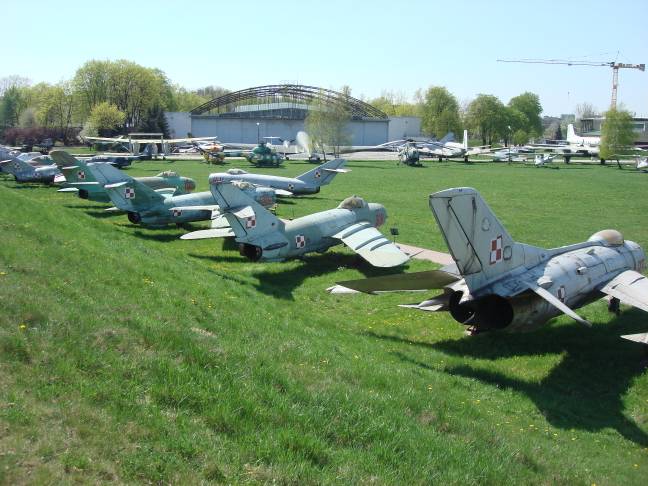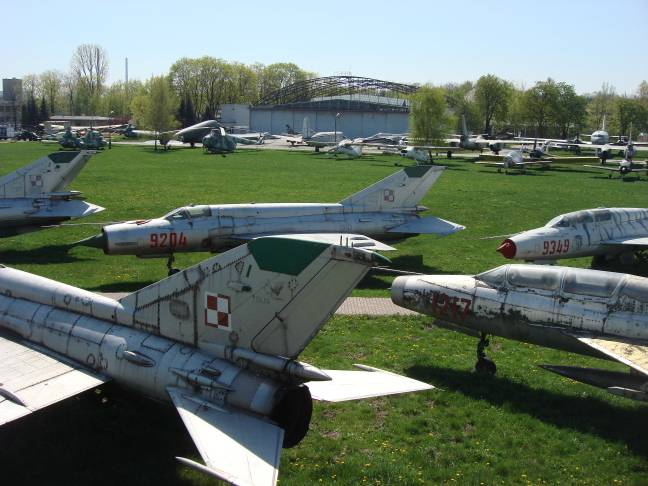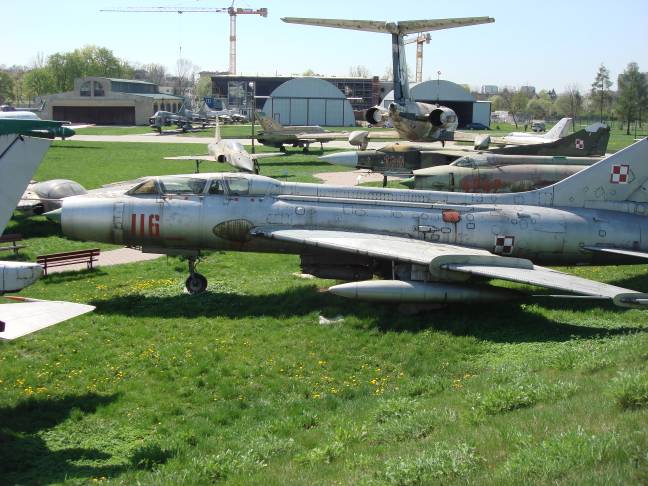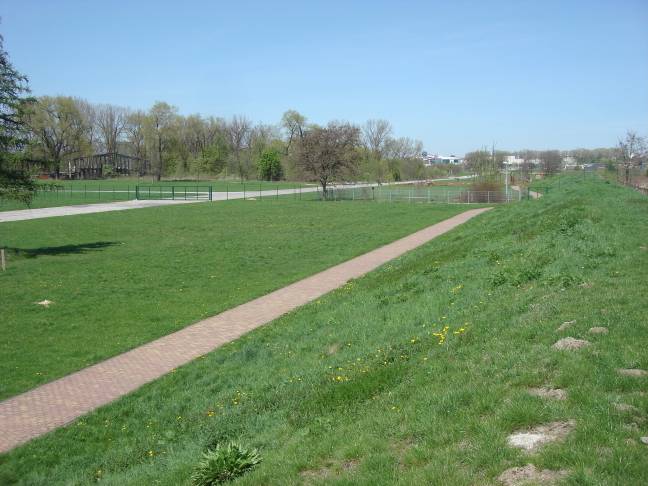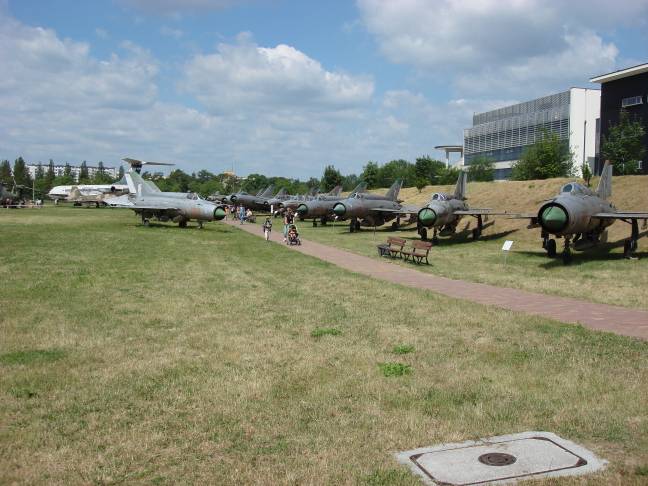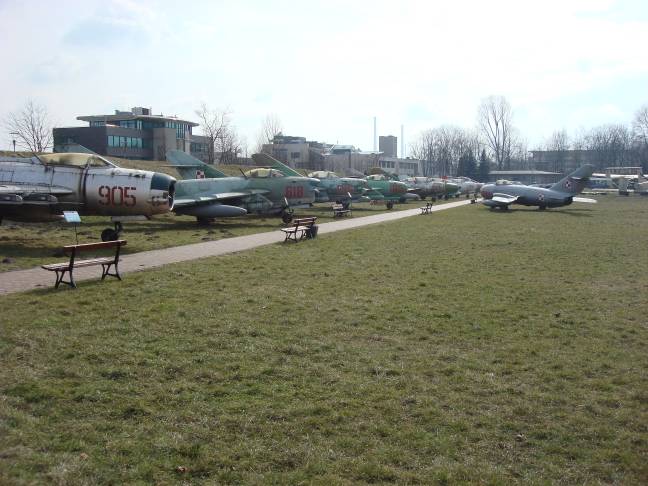Kraków 2010-08-01
Aviation Cultural Park in Krakow (Rakowice-Czyżyny).
Kamil Stasiak
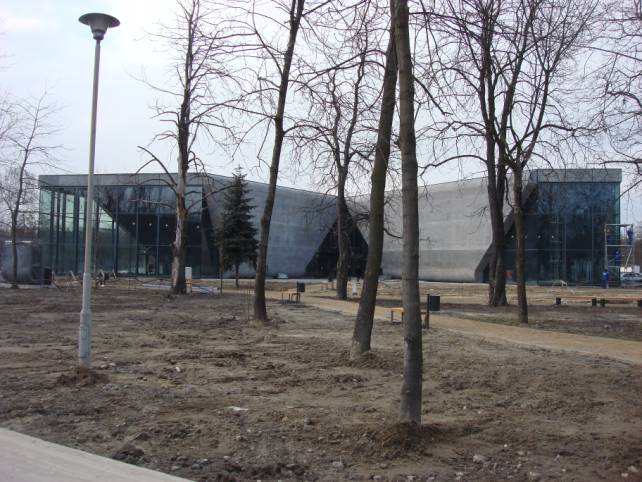
Most museums entirely devoted to the history of aviation are forced to manage quite small parts of the area off the beaten track of still active airports. A completely different situation takes place in Krakow, the local Polish Aviation Museum is in the possession of a large part of the historic, now no longer used Rakowice-Czyżyny airport, which, as a result of specific urban planning activities of the socialist authorities, found itself inside the city. Considerable tracts of land and the rich history of the place where this area is located has opened up extraordinary development prospects for the only typically aviation museum in Poland (perhaps a similar facility will soon be created in Łódź). Currently, it is difficult to satisfy both visitors and local authorities (who determine the financing of this type of organization) only by placing as many aircraft as possible. The ideal would be to arrange the space in such a way as to be able to present the planes, place them in the historical background, and at the same time interest the guests, not forgetting the educational value of the place where we are. It is not easy, but with time the Krakow museum and the adjacent area come closer to this ideal.
Historic Park Value.
One of the strengths of the location of the Aviation Cultural Park is its historical value. Hardly any place in Poland has such a rich aviation history as the Rakowice-Czyżyny airport. It all started in 1892. when aerostats of the Austro-Hungarian army began to be stationed on Rakowickie meadows. The first imperial-royal plane landed here. At the same time, the Austrian army is organizing one of the first permanent airports in Europe, which was included in Flugpark 7 (Flugpark'i were air bases with full technical equipment). October 31, 1918 The airport is taken over by Poles, thanks to which it becomes the first facility of this type belonging to Poland regaining independence. Three years later, the 2nd Aviation Regiment is organized in Rakowice, which was stationed here until August 23, 1939, when mobilization was announced, and combat planes were deployed at the front airfields. During most of the Second World War, the airport was used by the Germans, including in preparation for an attack on the USSR, or as a base for night fighters. When in January 1945 The Red Army occupied Krakow, also seized the Rakowice airport, and handed it over to the Polish military authority in the middle of the same year. In 1963. Combat planes were withdrawn from the airport, the Aeroklub Krakowski remained, which a year later organized an aviation exhibition constituting the basis for the creation of the museum. Such a rich history (which has been presented here in an extremely general manner, I encourage you to enrich your knowledge on this subject) could not be wasted.
Concept.
The idea of creating the Aviation Cultural Park was born in the early 1990s, but it was not possible to start its implementation immediately. It was undertaken to create a place that, apart from the presentation of the museum's exhibition, would serve as a park or a garden, which, with its specific arrangement, would bring to mind the history of Małopolska aviation, while preserving the usable possibilities of the area. It was also necessary to design the area in such a way that it was primarily adapted to the daily admission of a normal number of visitors. However, without forgetting the efforts to bring "life" to the historic airport. They wanted to create a place where it could be possible to organize small air shows or modeling, as well as other mass events (which could be a source of additional income for the museum). The plan of using the space also included a helipad designed for everyday use by public services. It all had to be harmonized in such a way that no non-standard use would hinder the basic, didactic nature of the facility. The park was supposed to be a place where an aviation enthusiast would feel comfortable, but a person not too interested in this subject could have a pleasant time.
Location.
The changes taking place in the development of Krakow located the area belonging to the Polish Aviation Museum in a rather characteristic location. In the past, the place where the old buildings of Krakow met Nowa Huta was not very densely built-up. In recent years, this situation has changed significantly, the free spaces located in the vicinity of Bora Komorowskiego Street and Jana Pawła II Avenue have been developed by: a hypermarket, housing estates, office buildings and buildings of the Cracow University of Technology. As a result, the specific location of the museum (most aviation museums, however, are located on the outskirts of cities) acquired an even more unique character. Additionally, a short distance away, on ul. Ułanów, there is a military unit, indirectly related to aviation, because it has an airborne role (in the area of this unit there is also one of the hangars used to store aerostats).
What has been achieved so far?
Almost 10 years ago, the process of implementing the previous assumptions began. The first to be completed was the construction of the earth embankment surrounding the exhibition area. Thanks to this, the view of the Nowa Huta housing estates was cut off, and the office buildings located just behind the embankment were assessed. Along the shaft, jet combat aircraft used in Polish aviation from the 1950s were set up, due to the large number of machines standing there, they were developed by the MiG design office, this place was called MiG Alley. In the next stages, a fence was built, and the path along MiGów Avenue was paved with ankles, allowing you to visit this part of the exhibition in worse weather conditions (without exposing yourself to soaked and dirty shoes and trouser legs). An important step was the leveling and restoration of the historical appearance of a large area of land with neglected allotments, which were replaced by a park that was friendly to residents. The earth overburden on the former runway was also removed. These efforts allowed for the creation of a concrete helipad and two new tin hangars. One of them now houses elements of the museum's exhibition, while the other houses two police helicopters. Thanks to this, the dream of restoring the daily aviation activity to the Rakowice airport came true. At the same time, a further section of the earth embankment was built along the former taxiway. In the future, further works will be carried out, making it possible to use the possibilities of the historic Rakowice-Czyżyny airport more and more pleasantly. At the end of last year, the local government of the Małopolskie Voivodeship purchased from the Military Property Agency an almost 4-hectare plot with relics of hangars from the 2nd Aviation Regiment, which will enable further development of the Aviation Cultural Park. Thanks to the actions taken, it was possible to organize the Malopolska Aviation Picnic, which is an excellent promotion of both technology and history.
The new main building.
It is true that the new main building of the museum is not an element of the Aviation Cultural Park plan, but it is also an object that is supposed to affect the quality of reception of the exhibition and the history of Małopolska aviation. The new building is not only to increase the exhibition possibilities of the Polish Aviation Museum, but also to improve its didactic functions, as well as to improve the comfort of work. An office, part of the exhibition, library and commercial part are to be moved to this building, there will also be rooms with new functions, such as a lecture hall or a small cinema. The construction of the building was completed in April this year, and the interior is currently being finished. The opening ceremony is scheduled for September (hopefully it will happen). The design of the building was made in the German studio Pyssal.Ruge Architekten and from the bird's eye view it is to resemble a three-blade propeller. The laying of the foundation act took place shortly after the construction started in May 2008, and at the beginning of the next year this event was recognized by the portal Sztuka - Architektura.pl as the most important in the field of Polish architecture for 2008.
Written by Kamil Stasiak
